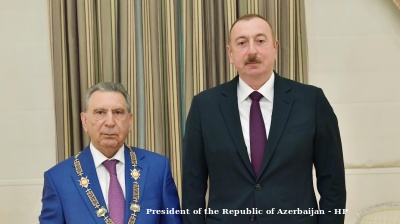According to a Morgan Stanley report released last month, the Russian e-commerce market for physical goods will grow to $31bn by 2020 and may reach $52bn by 2023 – up from around $18bn (1,040bn rubles) in 2017, reports East-West Digital News (EWDN).
“Russia is the last major emerging market without a dominant online retailer. Russia is at an inflection point,” believe the Morgan Stanley analysts, who bet on the emergence of “a leader being worth $10bn” by 2020.
The report underlines the high penetration rates of the Internet (80%) and smartphones (66%) in Russia, in contrast with a mere 3% e-commerce share in total retail.
Besides, “there is a clear link between the number of years spent online and the willingness to transact online,” note the analysts, who “believe Russia [is] reaching a critical mass of ‘mature’ Internet users, which is driving a rise in the number of transactions online as users become more accustomed to them.”
The report sees other growth drivers in the supply side. E-commerce projects have received significant funding over the past years from both private and public backers, and the trend should continue.
“More funding should allow for more scale, helping retailers to drive down key pain points (such as fulfilment costs), and to improve delivery times leading to a better overall customer proposition,” Morgan Stanley believes.

Chinese scenario
The Russian e-commerce market could develop according to a Chinese scenario. “Just like in China, we think the following is required for an e-commerce market leader in Russia to thrive: 1) develop a marketplace model, 2) invest in logistics, and 3) provide financial support for merchants,” write the authors.
“While in China, retailers are moving from a marketplace model (which brings together third party sellers) to holding inventory directly (1st party), we believe Russia will evolve from a 1st party model into a pure marketplace, or at least a marketplace that controls more of the logistics channel.”
Thus, “there is scope for partnerships in Russia with domestic offline retailers due to the infrastructure challenges, although it remains unclear how feasible these are. Thus cannibalisation remains a key risk for offline retailers,” Morgan Stanley concludes.
Battle of titans
The report justly underlines the rise of two players aiming for leadership, Yandex and Mail.Ru Group. The former has teamed up with Sberbank to create a huge e-commerce platform called Yandex.Market, as reported last year by East-West Digital News. Dubbed ‘Beru’ and currently in its beta version, this marketplace draws some of its inspiration from the Amazon model.
Sberbank, the country’s leading financial institution, is committed to invest as much as $500mn in the joint venture.
Sberbank’s huge client base (70% of the Russian population), its 14,000 branches across the country, as well as Yandex.Market’s audience (20mn Internet users and 11mn mobile app users per day, respectively) are strong assets for the project to succeed.
The Morgan Stanley analysts even see in Yandex.Taxi’s 400mn drivers (following the merger with Uber Russia) as many potential e-commerce delivery agents.
Features

The fall of Azerbaijan's Grey Cardinal
Ramiz Mehdiyev served as Azerbaijan's Presidential Administration head for 24 consecutive years, making him arguably the most powerful unelected official in post-Soviet Azerbaijan until his dramatic fall from grace.

Ambition, access and acceleration – Uzbekistan’s Startup Garage opens free academy for entrepreneurship
Aim is to train 50,000 young founders by 2030.

Ukraine’s growing energy crisis promises a cold and dark winter
Since the summer, Kyiv has changed tactics. Given the almost complete failure of Western oil sanctions to curb Russian oil exports, it has been targeting Russian oil refineries. The Kremlin has struck back, targeting Ukraine's power system.

Russia, China sign off on Northern Route shipping deal to slash global freight times
Russia and China have signed a landmark agreement to develop and commercialise the Northern Sea Route (NSR), after Beijing tested the route last month, that could slash Europe-Asia cargo transit times and challenge the primacy of the Suez Canal.




_2_1761012864.jpg)